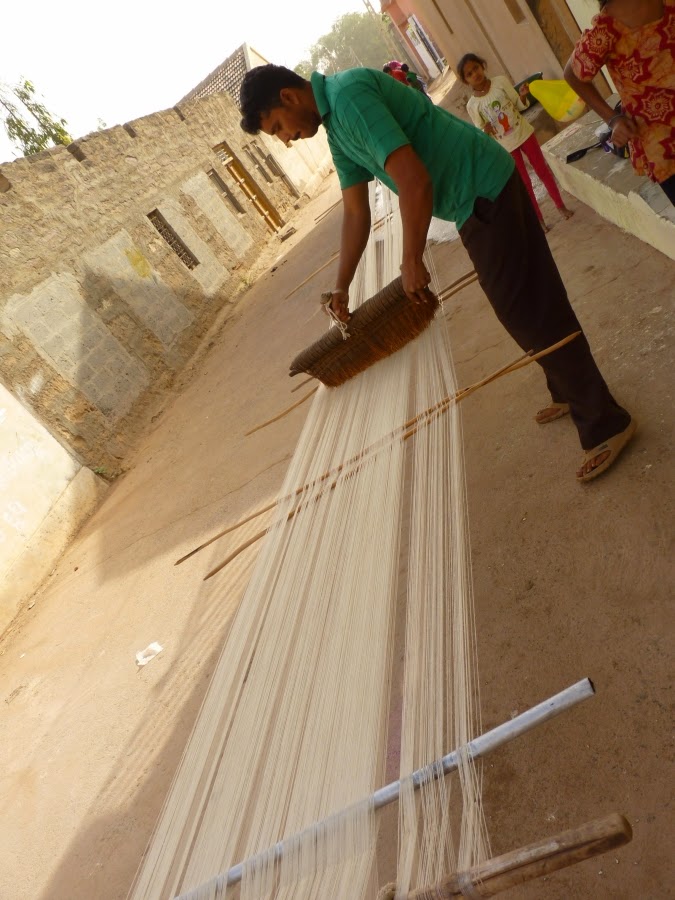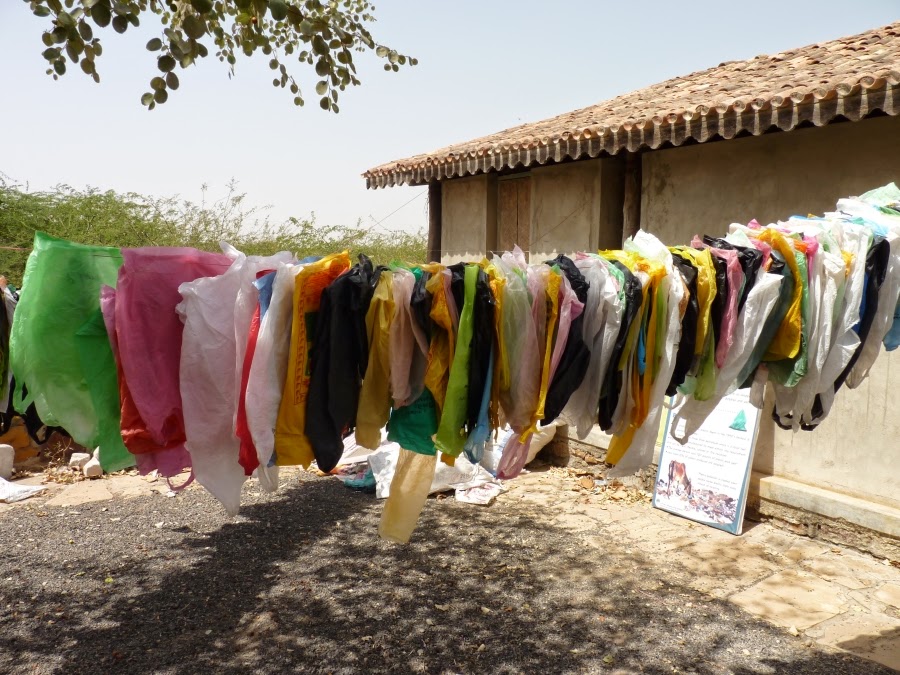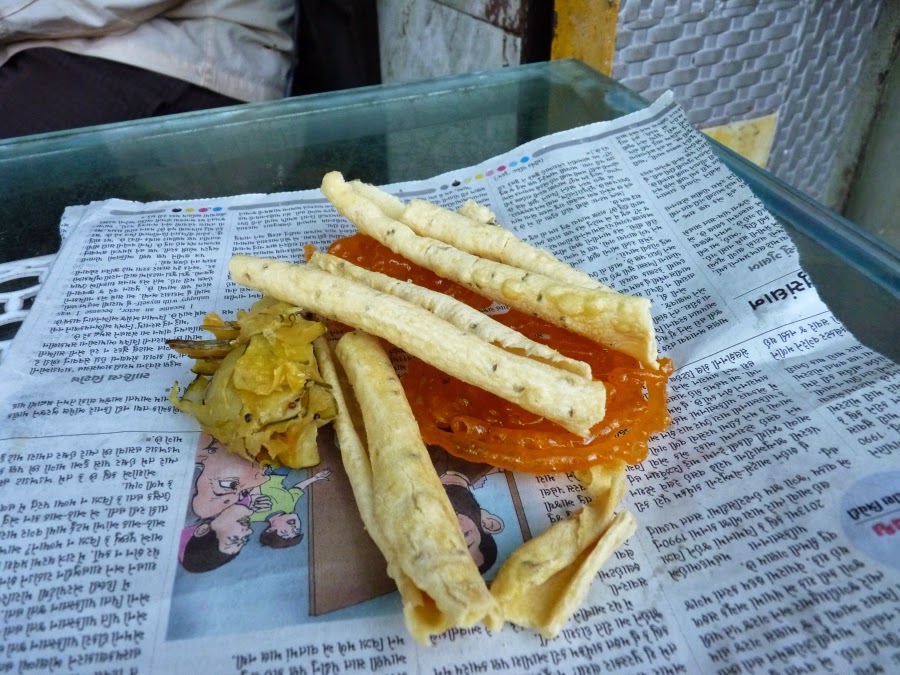 |
| The tree of sparrows |
The wall-art at Khamir was a cake walk after the Bhujodi one. The Director, Meera, wanted pottery motifs to be included in the design and the first thing that came to my mind was an image of a tortoise. And I was surprised to learn later that the word 'Kutch' has been derived from the word "kachbo" meaning tortoise in Gujarati, owing to the flat, tortoise shaped land that forms the district of Kutch. You may view the pictures of the wall-art at Khamir here.
 |
| A motif I painted on the wall at Khamir |
I also had the opportunity to go around the different studios at Khamir, dedicated for different crafts like, block printing with natural dyes, pottery, plastic weaving (to recycle plastic), cloth weaving, etc.
 |
| Can you count the sparrows? |
The day
before I was to leave I decided to explore a bit of Bhuj and do some shopping.
And what did I buy? I bought some clothes and jewelry which nomads, the Rabaris
wear. I really hope I do wear these things at least once. In a shop that I
bought these from, on display were exquisite and rich pieces of embroidery done
around 10 to 25 yrs ago. The Rabaris have a tradition of teaching their young
girls embroidery from the early age of ten and she is supposed to make her wedding
trousseau herself, which then goes as dowry. The richer and more complicated
the embroidery, the higher is their status. Since dowry is no longer given,
many Rabaris have been selling their embroidered pieces to shops like these to
make money. I remembered that I used to barely pass in Needlework in school and
was happy that I wasn’t a Rabari girl.






























































